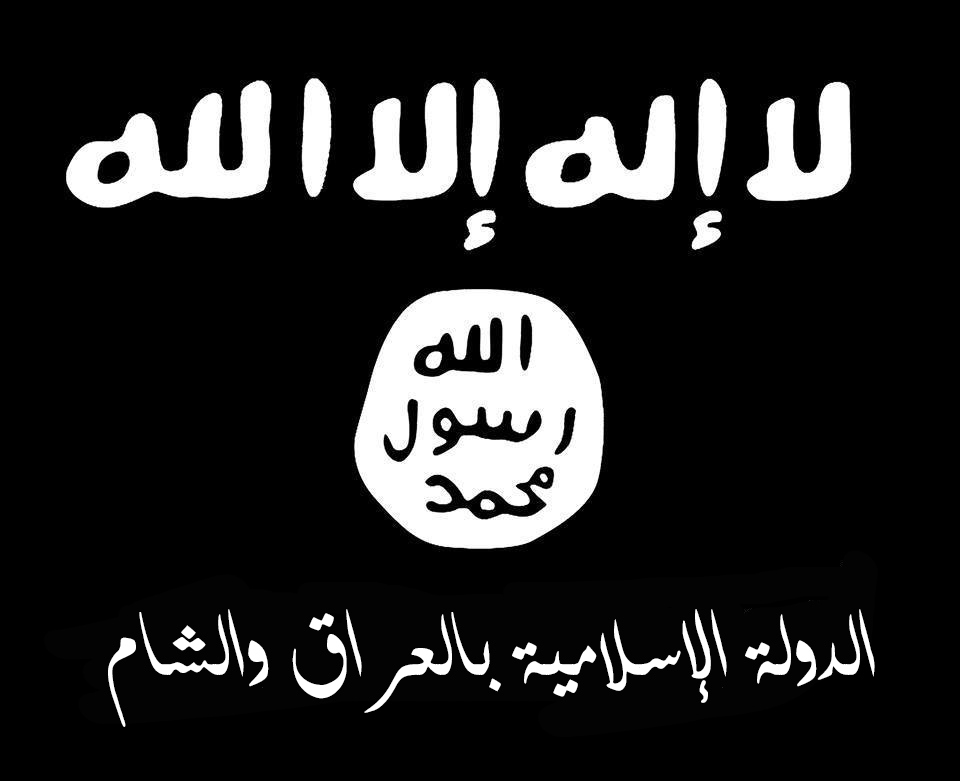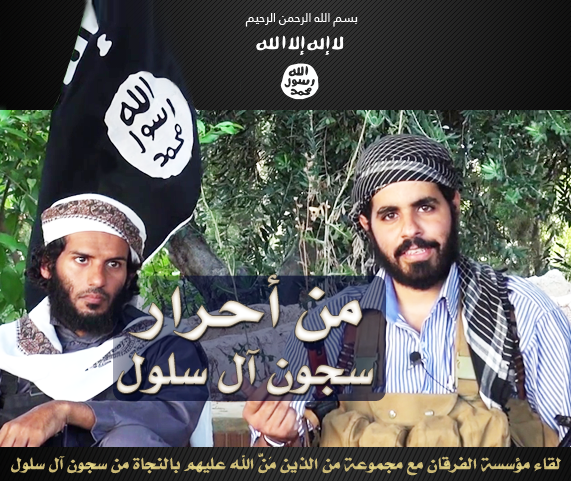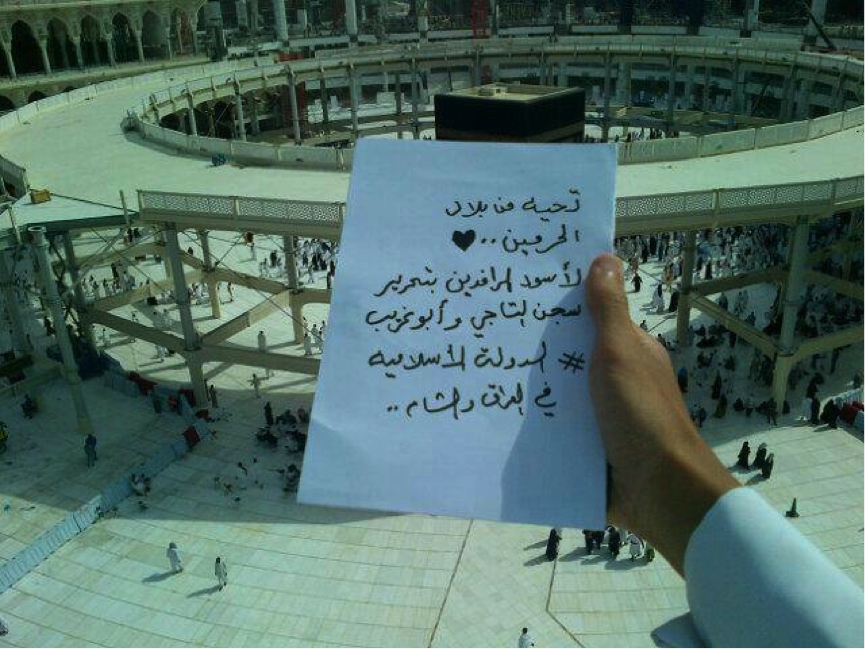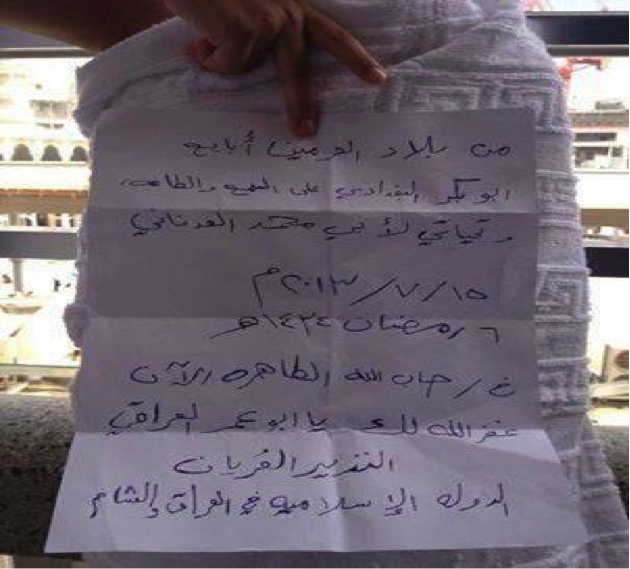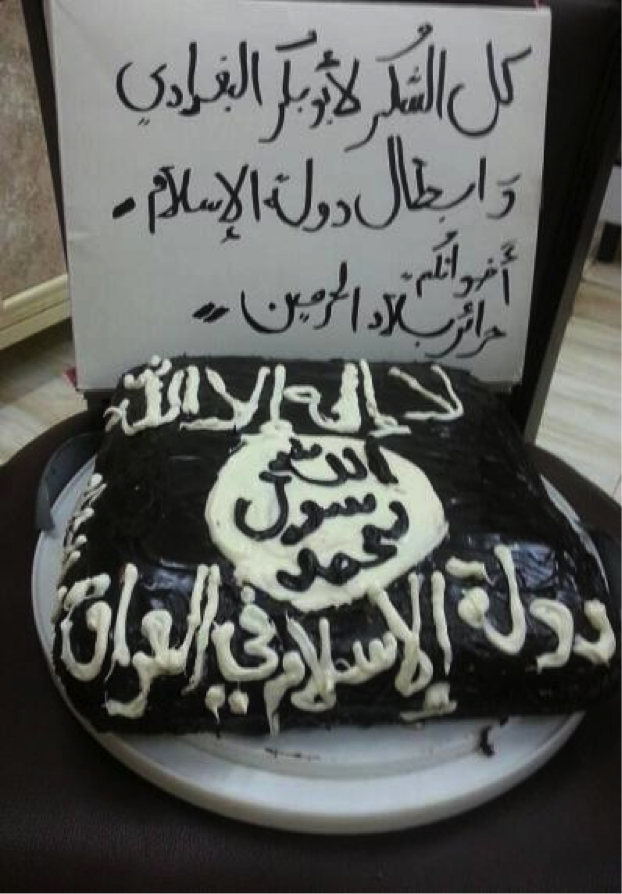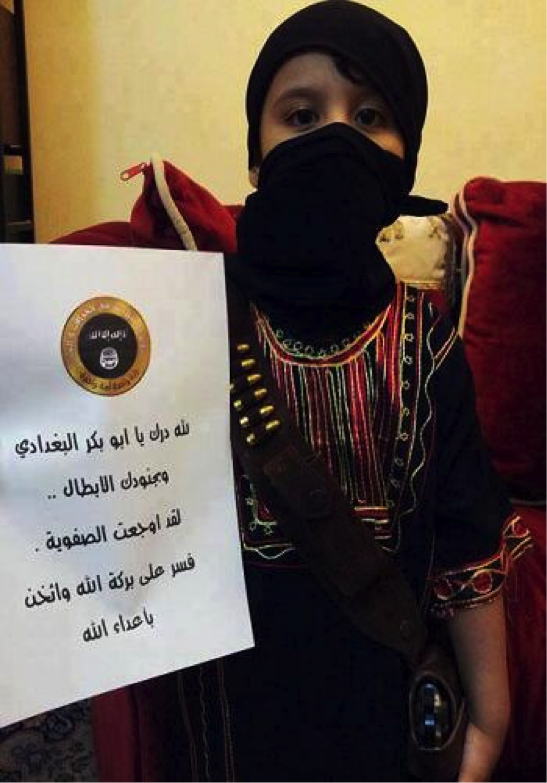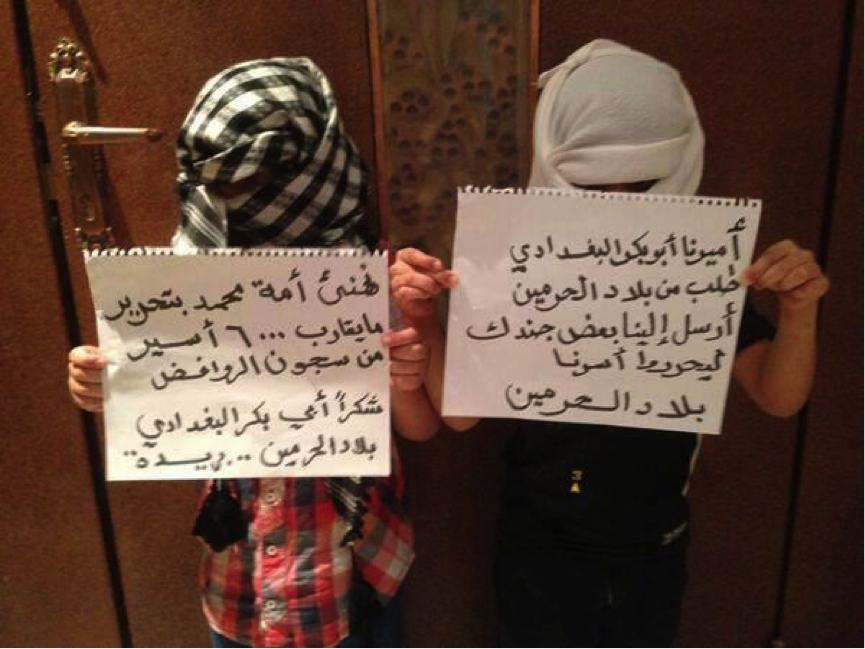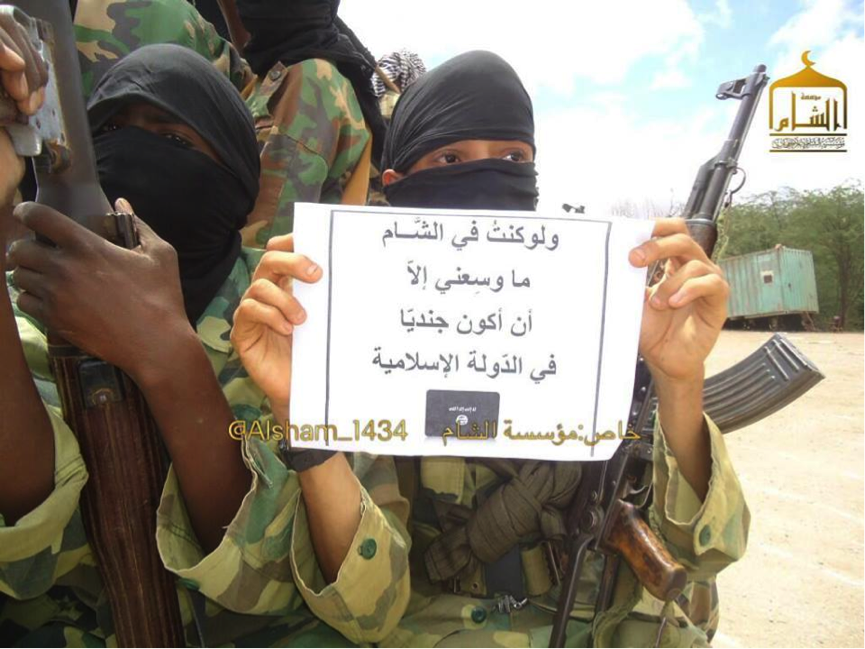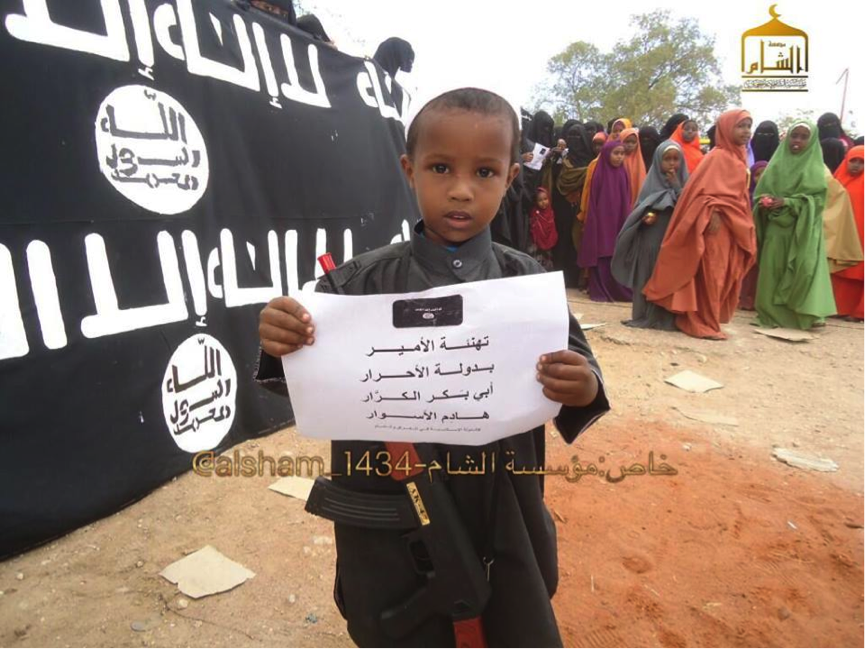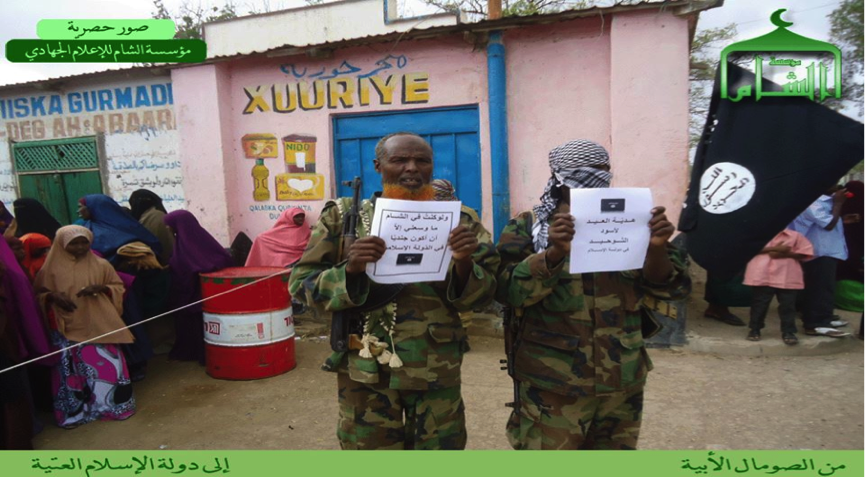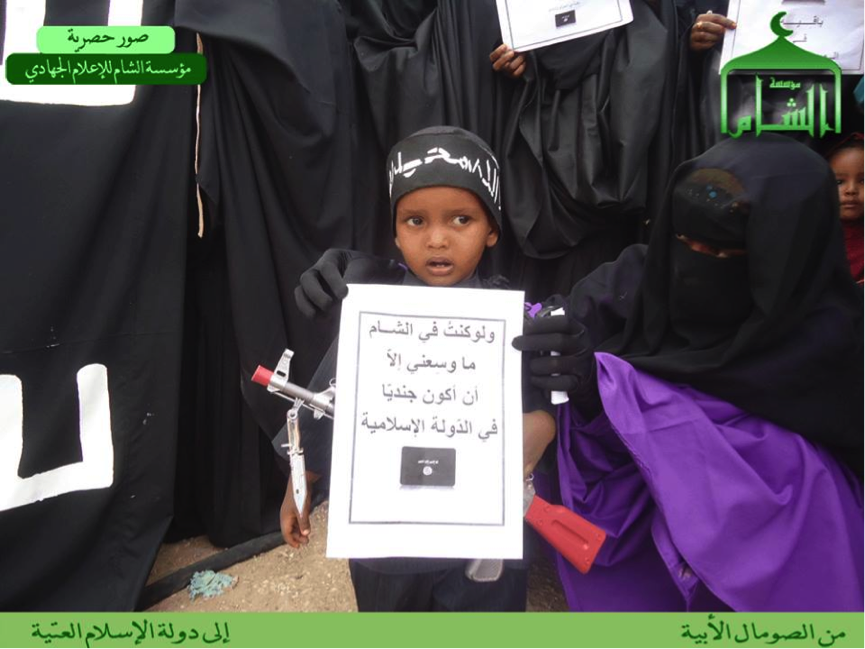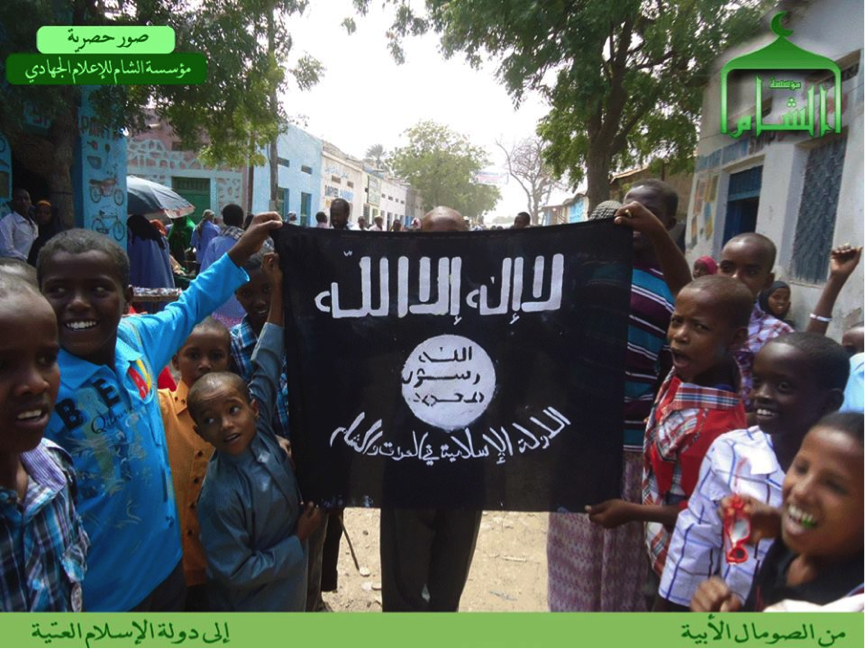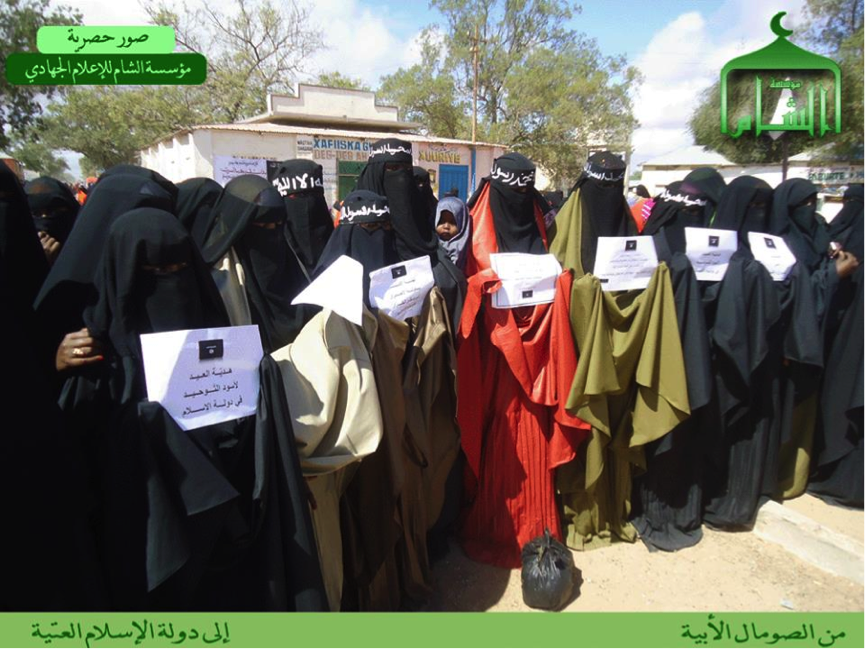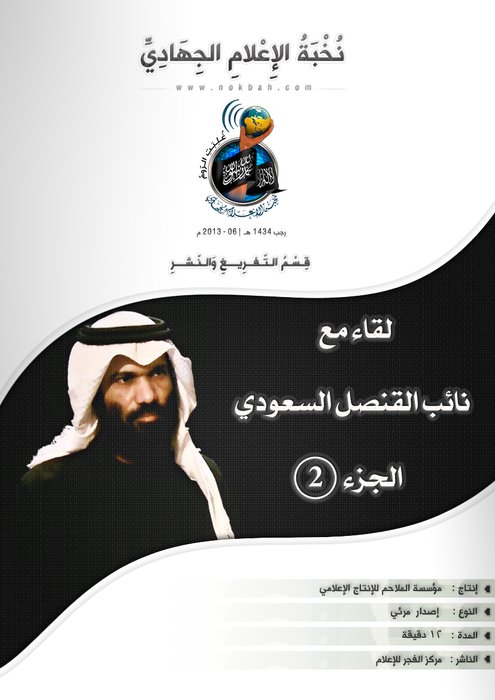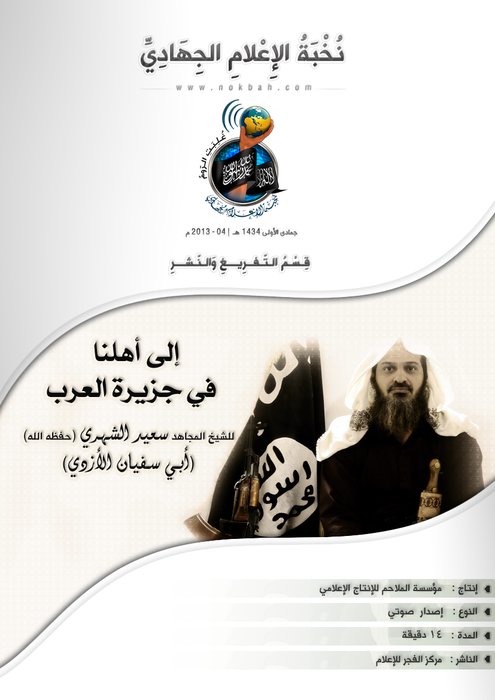NOTE: For prior parts in the Hizballah Cavalcade series you can view an archive of it all here.
—
Bahrain’s Saraya al-Muqawama al-Sha’biya: Militants of the February 14 Youth Coalition
By Phillip Smyth
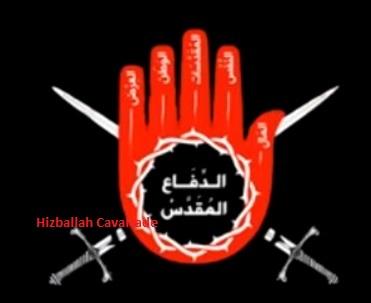
Figure 1: Saraya al-Muqawama al-Sha’biya’s logo.
Saraya al-Muqawama al-Sha’biya (The Popular Resistance Brigades or SMS), sometimes also called Saraya al-Muqawama (The Resistance Brigades), was listed by the government of Bahrain as a terrorist organization following the deadly March 3, 2014 bombing. The group, along with fellow militant group Saraya al-Ashtar, claimed responsibility for the attack. SMS has been operationally active and publishing its activities online since April 2012. Importantly, Saraya al-Muqawama al-Sha’biya does not hide that they are affiliated with one of the main anti-government protest groups, the February 14 Youth Coalition (which was also listed as a terrorist organization by the government of Bahrain). This is hardly a minor connection, since, both the February 14 Youth Coalition and SMS have also distributed images sharing one another’s logos, organized events (such as protests) together, and share a similar narrative. Other militant groups—namely Saraya al-Ashtar and Saraya al-Mukhtar—have only vaguely claimed to represent links to protestors, let alone main protest organizations.
In June 2013, the Bahraini government accused the February 14 Youth Coalition of having a “spiritual leader” based in Karbala, Iraq and of, “frequently travel[ing] between Iran, Iraq and Lebanon to obtain financial and moral support as well as weapons training.” However, Bahraini authorities provided little substantiating evidence dealing with claims of Iranian or Iranian proxy involvement. Nevertheless, according to Iranian reports, February 14 Youth Coalition representatives have thanked Iranian Supreme Leader Ayatollah Ali Khamenei for his comments supportive of their activities. Iranian media has also expressed their support for the “revolutionary activities” of the Bahraini group. Despite these pronouncements, the actual relationship between Iran and the February 14 Youth Coalition, particularly dealing with any attempts at training or equipping militant elements attached to the organization, is still unknown.
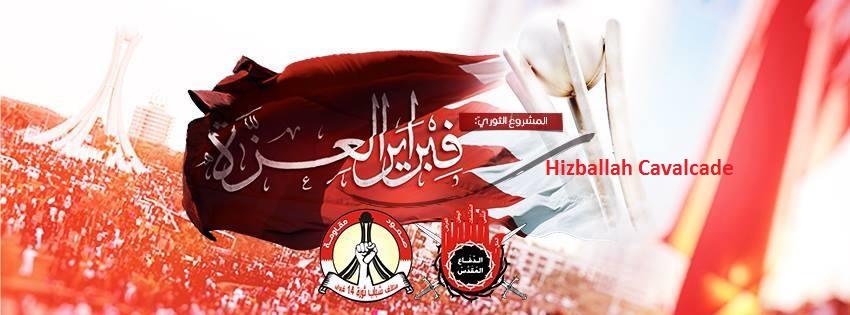
Figure 2: Both the February 14 Youth Coalition and Saraya al-Muqawama al-Sha’biya’s logos on a promotional image released onto multiple February 14 Youth Coalition pages.
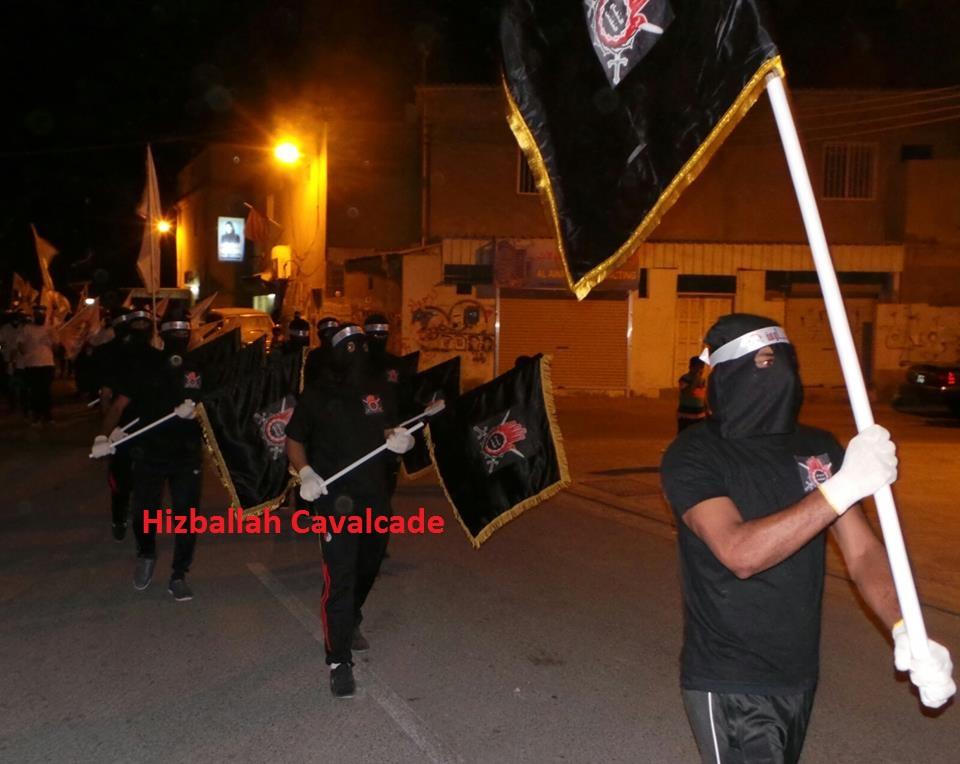
Figure 3: SMS supporters carry the group’s flag during a march.
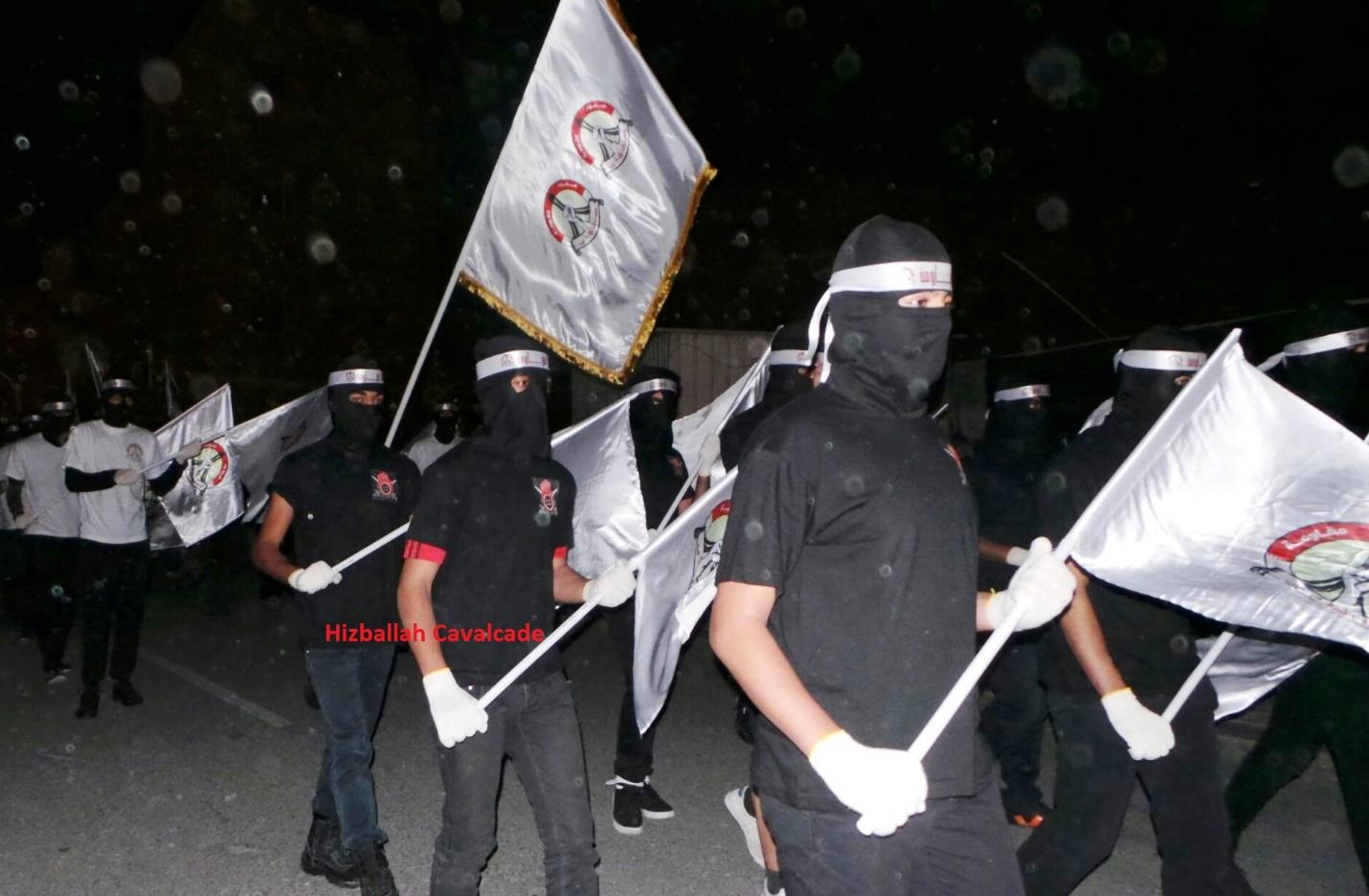
Figure 4: SMS and February 14 Youth Coalition supporters march together and carry February 14 Youth Coalition flags.
Initially, the February 14 Youth Coalition did not embrace violence. However, after publishing a series of “warnings” to the Bahraini government, Gulf Arab states (namely, Saudi Arabia and the UAE) which have deployed forces to Bahrain, and foreigners recruited into the Bahrain’s internal security forces (often referred to by the group and other Bahraini militants as, “mercenaries”), the coalition issued communiques demonstrating they would choose a more militant path of “resistance.” In a January 27, 2012 English-language statement made by a February 14 Youth Coalition affiliated page, the group issued a statement reading:
“We have so far preserved our right to use force for self-defense, hoping that would make you hesitant from attacking peaceful protestors, women and children. However, common sense and human logic do not seem to work on you…Our people have decided to bring an end to the illegitimate regime…We shall take no responsibility for whatever might happen to the mercenaries after this final warning.”
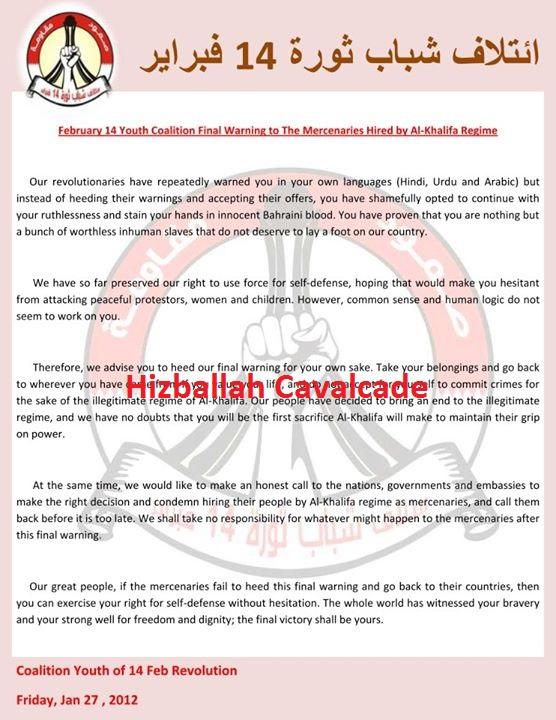
Three months after this announcement, SMS pushed for a response to the holding of the controversial 2012 Bahrain Grand Prix Formula 1 race. The group released images urging protestors to throw the gas (the group claimed it was poisonous) used by Bahraini police at the race cars. However, no armed action was taken against the race by SMS. It is likely that in such an early stage of development and combined with Bahraini government crackdowns, the group was unable to act.

Figure 5: One of SMS’s English language posters calling for action against the 2012 Grand Prix race.
Narrative Structure
SMS considers its fighters to be “jihadists,” refer to their attacks as “jihadist operations,” and believe they are fighting a “jihad against the infidel Khalifas [Bahrain’s ruling royal family].” While the message of jihad is repeated in many SMS statements, these statements do not share the same level of more complicated religious and ideological messaging found with other non-Bahraini Shia jihadist elements.
SMS also lacks a specific goal for what type of government will rule in Bahrain following a theoretical collapse of the currently ruling Khalifa royal family. Still, this has not stopped the group from constructing complex narratives via militant activity for their enemies.
Following Saraya al-Ashtar’s and SMS’s claim of responsibility for the March 3, 2014 bombing (which killed two Bahraini police officers and a police officer sent by the United Arab Emirates [UAE] to Bahrain), SMS used the opportunity to criticize government claims that forces of the Peninsula Shield Force were being used in conjunction with local Bahraini police forces to counter protests and riots.
Sent to Bahrain in 2011, the Peninsula Shield Force included hundreds from the Saudi military and the UAE’s police force. Officially, these units claimed they were not involved in internal matters in Bahrain and were only interested in securing strategic bases and locations from “external influence.” Regardless, the death of a UAE police officer attached to Bahraini police served as a propaganda coup for SMS.
The timing of the SMS’s bombing claim and messages which proceeded it also fit into a broader message dealing with the Peninsula Shield Force and particularly Saudi Arabia. SMS has demonstrated a specific ire for the Saudis. The organization’s communiques have called Saudi Arabia the “usurper of land,” “occupiers,” and have stated their operations are to “purge the land of its Saudi and Khalifa occupiers.”
In part, this may tie back to February 14 Youth Coalition links to Saudi Shia activists. Researcher Fredric M. Wehrey noted that an “important attribute of the February 14 Youth Coalition is its strong affinity with Shi’a activists in neighboring Saudi Arabia.” Wehrey went on to explain how coordinated protests were conducted by Bahraini and Saudi groups out of solidarity. The February 14 Youth Coalition’s and SMS’s links to the Saudi Shia is also important when viewed in context with announcements by fellow militant organization, Saraya al-Mukhtar. Saraya al-Mukhtar has issued a number of announcements saying they share the cause of the “people of the [Saudi] Eastern Region” –an area heavily populated by Saudi Shia. The shared narrative may demonstrate deeper links between Saraya al-Mukhtar, SMS, and the February 14 Youth Coalition.
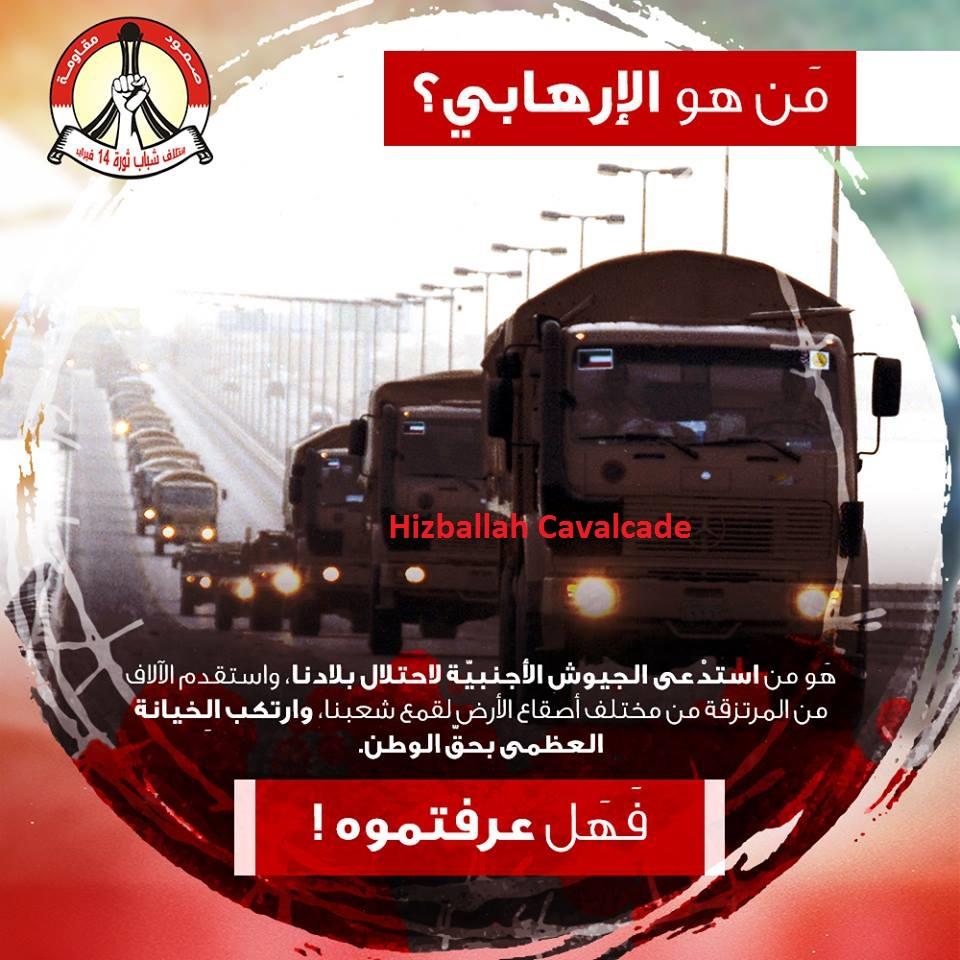
Figure 6: A poster released by the February 14 Youth Coalition asking, “Who are the terrorists?” The photo shows Saudi forces crossing the King Fahd Causeway which links Bahrain to Saudi Arabia.
As part of the view casting the Saudis as foreign occupiers, activists from SMS and the February 14 Youth Coalition have drawn parallels between Israel and Saudi Arabia; accusing both counties of using the same techniques of occupation. Prior to a series of March 2014 protests against “Saudi occupation”, the February 14 Youth Coalition and SMS circulated images attempting to link Saudi Arabia and Israel as fellow occupying states. This also extended into the realm of February 14 Youth Coalition partisans attempting to directly link the causes of Palestinian and Bahraini demonstrators.
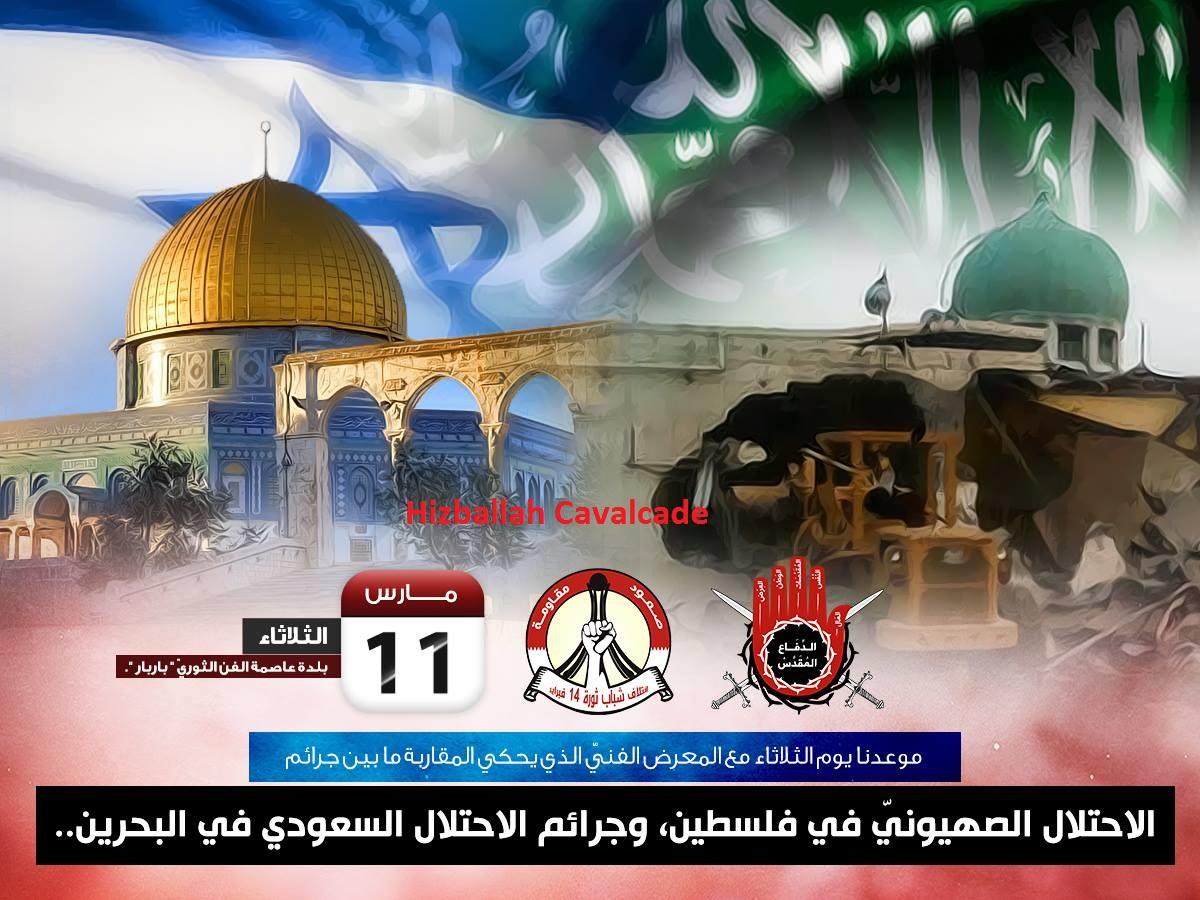
Figure 7: The Israeli flag flies behind Jerusalem’s Dome of the Rock (left) while a bulldozer is shown destroying the 400 year old Amir Mohammed Braighi Mosque with a Saudi flag behind it (right). The latter incident occurred in 2011 along with the Bahraini government destruction of other Shia mosques. This picture was used as a tool to organize activists for protests and events against the “Saudi occupation.”
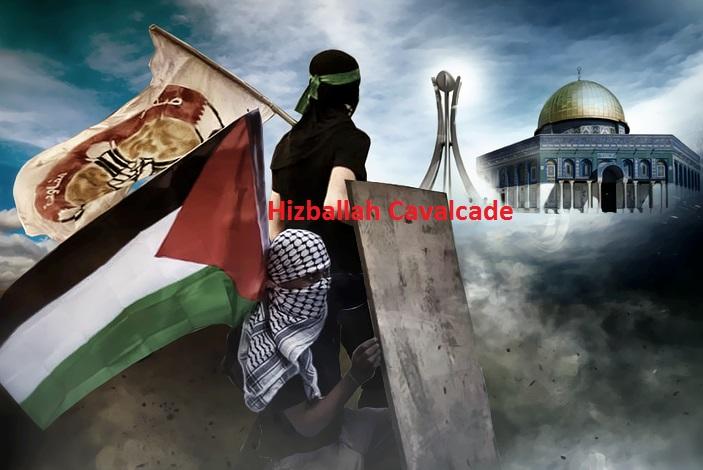
Figure 8: A poster showing a Bahraini protester (with February 14 Youth Coalition) and a Palestinian activist. The former looks to the now demolished Pearl Roundabout statue, the latter looks to the Dome of the Rock. The picture attempts to show a unity of purpose and cause between Palestinian and Bahraini demonstrators.
Symbols of the “Popular Resistance”

Figure 9: SMS protesters at a February 14 Youth Coalition event demonstrating against “The Saudi Occupation.”
Shia symbolism is heavily featured in the group’s logo. The most prominent image is the symbolic hand of Shia leader Abbas Ibn Ali; son of the first Shia imam and loyal aid and military leader for the third Shia imam, Husayn ibn Ali. Serving as Husayn’s flag bearer during the historic Battle of Karbala, Abbas’s hand was cut off by one of the forces of Yazid, the reviled leader of the Umayyads, as Abbas went alone to collect water for Husayn’s dehydrated camp. Abbas went on to fight singlehandedly until his other arm was cut off by sword strikes from Yazid’s forces and was then killed. Abbas’s loyalty and steadfastness until being cut down remains an important message for many Shia Muslims.
Another unique feature from the logo is that “The Sacred Defense” is written within the symbolic hand of Abbas. This helps convey that the group’s conflict with the government is viewed as both a defensive and religiously justified action. Intriguingly, the Shia jihad in Syria and the Iran-Iraq War (1980-1988) have (by Shia actors) both been described as “The Sacred Defense.”
Behind the

